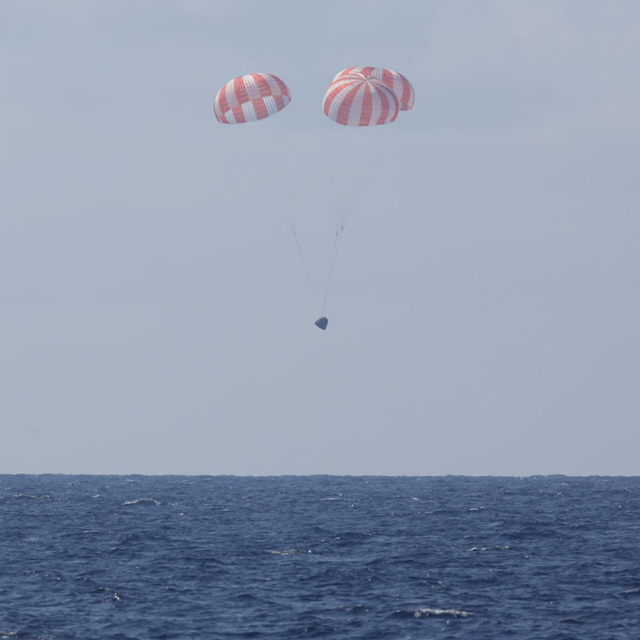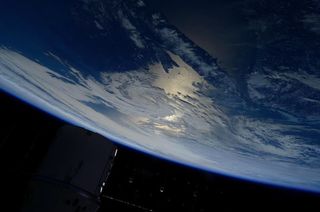
SpaceX's robotic Dragon capsule returned to Earth today (May 21), wrapping up the private spaceflight company's sixth cargo mission to the International Space Station.
The unmanned Dragon spacecraft splashed down today in the Pacific Ocean off the coast of Baja California at 12:42 p.m. EDT (1642 GMT), about 5 1/2 hours after departing the orbiting lab.
SpaceX personnel will soon retrieve the capsule — which brought down more than 3,100 lbs. (1,400 kilograms) of science experiments and other gear — by boat.
"We just got word of the successful splashdown. Congrats!" station astronaut Samantha Cristoforetti of Italy wrote on Twitter, where she tweets as @AstroSamantha.
California-based SpaceX holds a $1.6 billion NASA contract to make at least 12 robotic resupply runs to the space station using Dragon paired with SpaceX's Falcon 9 rocket. The latest flight kicked off on April 14, when the Falcon 9 delivered Dragon to orbit and, in a daring reusable-rocket test, nearly pulled off a historic landing on an unmanned ship in the Atlantic Ocean. (The Falcon 9's first stage managed to hit the boat, but the booster toppled over and exploded.)
NASA also signed a space station resupply deal with Virginia-based Orbital ATK; the company got $1.9 billion to fly eight missions using its Cygnus spacecraft and Antares rocket. The first two flights went well, but the third, in October 2014, ended just seconds after liftoff, when the Antares exploded.
Orbital ATK is currently revamping Antares and will use United Launch Alliance's Atlas V rocket for the next Cygnus flight, which is scheduled for late 2015, and possibly for additional cargo missions as well.
Get the Space.com Newsletter
Breaking space news, the latest updates on rocket launches, skywatching events and more!

Two other unmanned freighters currently visit the International Space Station: Japan's H-II Transfer Vehicle and Russia's Progress spacecraft. A Progress launched just two weeks after Dragon, on April 28. But the Progress 59 mission failed as a result of a problem with its Soyuz rocket, and the cargo vessel burned up in Earth's atmosphere on May 7 without ever reaching the orbiting lab.
Death by fire is the ultimate fate of all the resupply vessels — even those that make it to the station as planned — except for Dragon, which is built to withstand the extreme conditions experienced during re-entry to Earth's atmosphere.
Another Dragon will head up to the orbiting lab soon: The next SpaceX resupply mission is currently scheduled to launch on June 26.
Follow Mike Wall on Twitter @michaeldwall and Google+. Follow us @Spacedotcom, Facebook or Google+. Originally published on Space.com.
Join our Space Forums to keep talking space on the latest missions, night sky and more! And if you have a news tip, correction or comment, let us know at: community@space.com.

Michael Wall is a Senior Space Writer with Space.com and joined the team in 2010. He primarily covers exoplanets, spaceflight and military space, but has been known to dabble in the space art beat. His book about the search for alien life, "Out There," was published on Nov. 13, 2018. Before becoming a science writer, Michael worked as a herpetologist and wildlife biologist. He has a Ph.D. in evolutionary biology from the University of Sydney, Australia, a bachelor's degree from the University of Arizona, and a graduate certificate in science writing from the University of California, Santa Cruz. To find out what his latest project is, you can follow Michael on Twitter.











